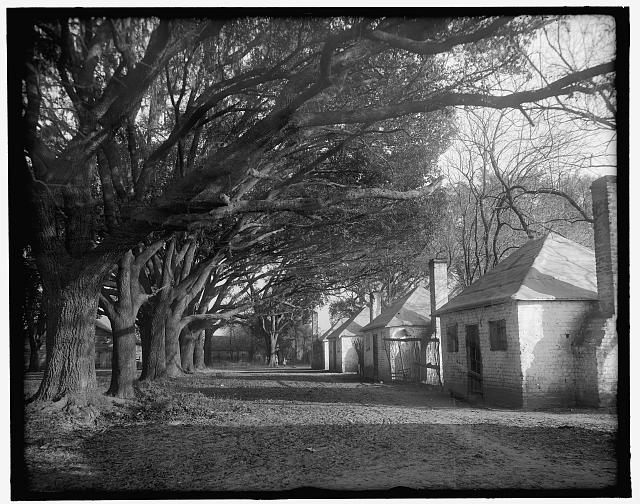At one o’clock in the morning on 1 September 1859, Milly T. King arrived at the home of James Clary and found his slave Hannah “lying on the hearth gasping for breath, and I thought dying.” When King saw Hannah an hour later, she was dead. The following day Brunswick County coroner William Lett arrived to examine the body. With him were twelve men, none of whom had a medical background but rather were chosen as upstanding men and representatives of the county. The office of coroner held inquisitions in cases when persons met a sudden, violent, unnatural, or suspicious death. In this case Hannah had certainly met a sudden and suspicious demise.
Hannah, owned by the late Elizabeth H. Harwell, had been in the possession of James Clary, who adamantly maintained that the marks found on her feet and legs and the wound on her head were not from anything suspicious but came as a result of a fall from a window occurring a few weeks before her death. The coroner and his jury of white men were left to decide if Hannah had suffered an accidental death or if her death had been caused by something more malicious. Clary’s wife, Eliza, backed up her husband’s statements and claimed to know nothing of Hannah’s death, maintaining that her wounds were caused by the fall. But the Clarys’ neighbors painted a different picture of the events surrounding Hannah’s death.
Milly King heard Hannah “wailing and begging as though she was under severe chastisement” and reported Eliza Clary saying “she would kill [Hannah] if she did not do better.” Samuel King recalled seeing Hannah “tied across a log hands and feet” with Clary “whipping her with a leather rein doubled” two weeks prior to her death. Clary was said to have explained that he was “whipping her for going in the table cloth and taking out something to eat.” Samuel testified that he heard Hannah at other times, including the day before she died, “making lamentations as if under severe chastisement and sometimes for nearly an hour at a time.” Another neighbor also heard “some person begging and heard some blows as if inflicted with a large switch…”
Faced with contradictory evidence from witnesses, a doctor was finally summoned to provide a physician’s view of events. Dr. Robert S. Powell testified that all of Hannah’s wounds “did their part in hastening the fatal termination,” and the large wound on her head “would ultimately have produced death without medical assistance.” When questioned if her myriad of wounds could have come from a fall, Powell replied that the large head wound could have, but that her other wounds could not have come from the same fall. Powell further believed that “the marks of chastisements had been inflicted about 48 hours” before he saw her, which certainly contradicted Clary’s claims that Hannah’s wounds came from a fall occurring weeks before her death.
After examining the body and hearing testimony, the coroner and his jurors determined that Hannah did not die from a fall but that the “deceased came to her death by abuse inflicted on her person at sundry times during the present year and in various ways by choking and by blows inflicted on her head, body, and limbs,” and some of the blows appeared “to have been inflicted with switches and by other heavier weapons we know not what in the hands of James Clary.”
Virginia coroners were frequently called upon to investigate the deaths of slaves and were often reluctant to place blame in these instances. In the case of Hannah, the coroner and jury did not hesitate to blame Clary for her murder. However, a similar case in Petersburg showed a different outcome. Reuben, a 40-year-old slave, died in 1843 after being “severely whipped” by John Minetree. The coroner found “his body marked with many blows of the cowhide” yet the whipping was not considered a sufficient cause of death. It was determined that Reuben came to his death from an “undue quantity of cold water in his stomach, while under excessive heat and exhaustion.” The coroner and his jury censured the severity of the whipping, but Minetree was discharged from all murder charges. A similar death happened in Frederick County when Lucy met her end in 1833. Earlier on the day of her death, Lucy had been whipped about the thighs as punishment for stealing some “trifling article” from a neighbor. After her punishment she was sent about her day’s work. While working over the fire Lucy fainted and struck her head on the hearth. The coroner determined that the whipping and fall were the cause of her death but no blame was placed on her owner because there was “no intention to kill on the part of her master.”
The separate office of coroner was created in about 1660 to hold inquisitions into sudden, suspicious, and violent deaths. Causes of death found in coroner’s inquisitions include murder, infanticide, suicide, exposure to the elements, drownings, train accidents, and natural causes. Coroner’s inquisitions are a valuable source for local, social, and legal history. They are especially useful for those researching African Americans. The gender and race of the deceased was often noted in the inquests. If the deceased was African American, the inquest would identify the individual as either a slave or a free person, and if the deceased was a slave, the inquest would include the name of the slaveowner. Currently, the following counties and cities have coroner’s inquisitions available for research at the Library of Virginia: Amelia County, Amherst County, Arlington County, Bedford County, Botetourt County, Brunswick County, Charlotte County, Frederick County, Henrico County, Norfolk County, Petersburg (City), and Rockbridge County.
-Bari Helms, Local Records Archivist



















2 Comments